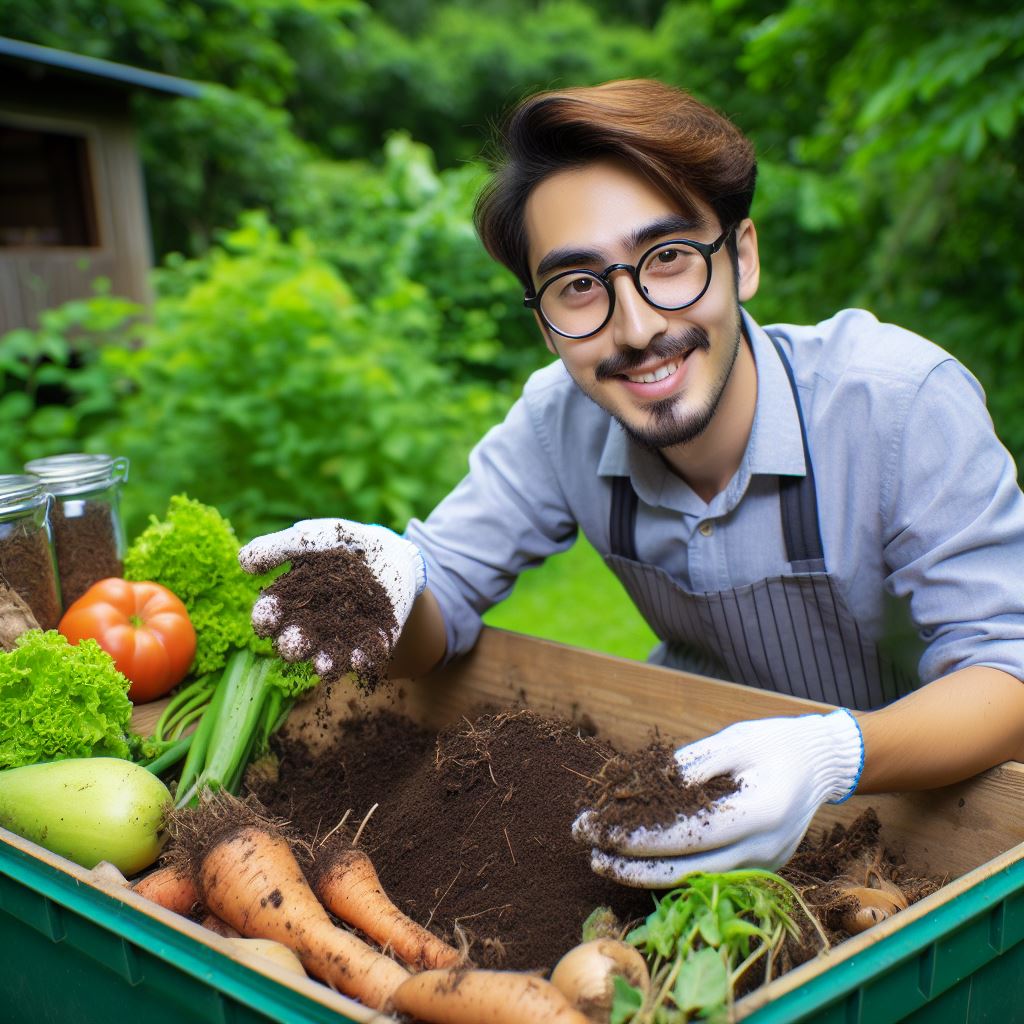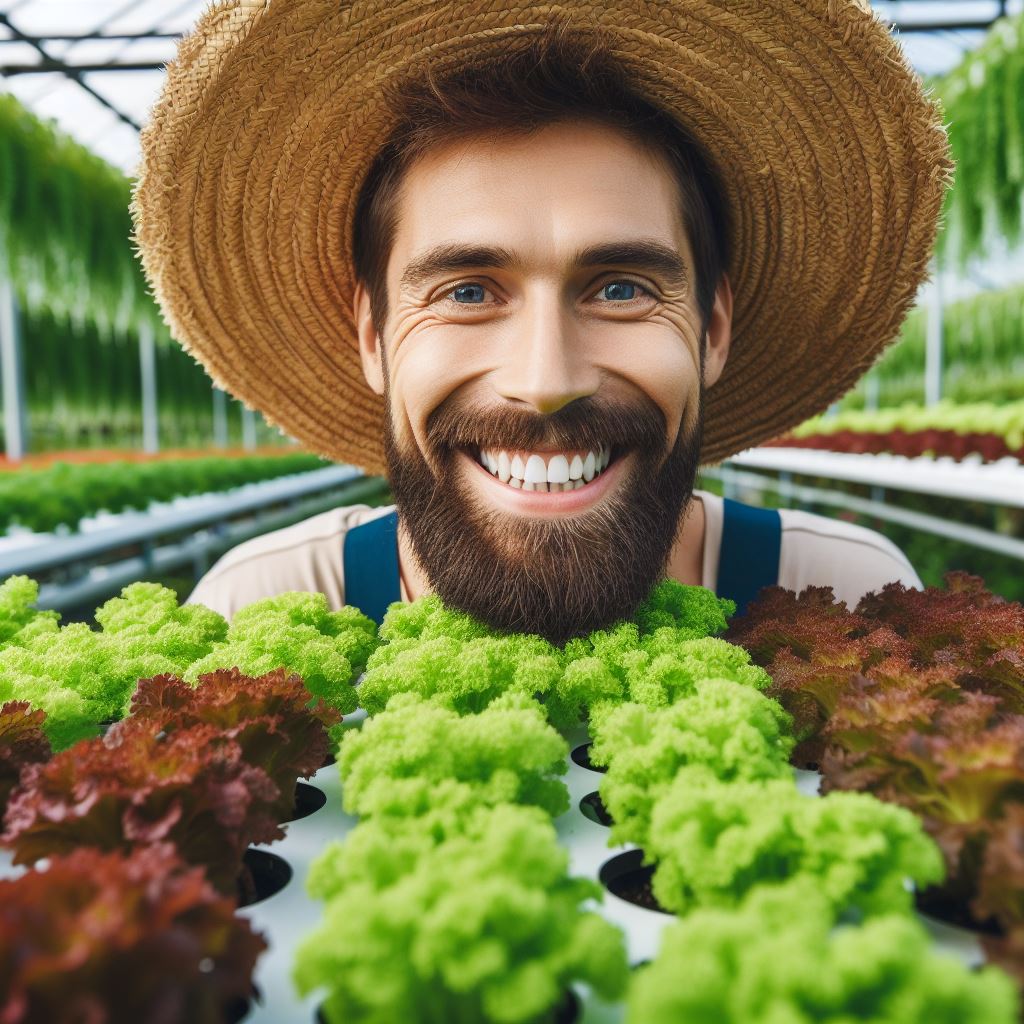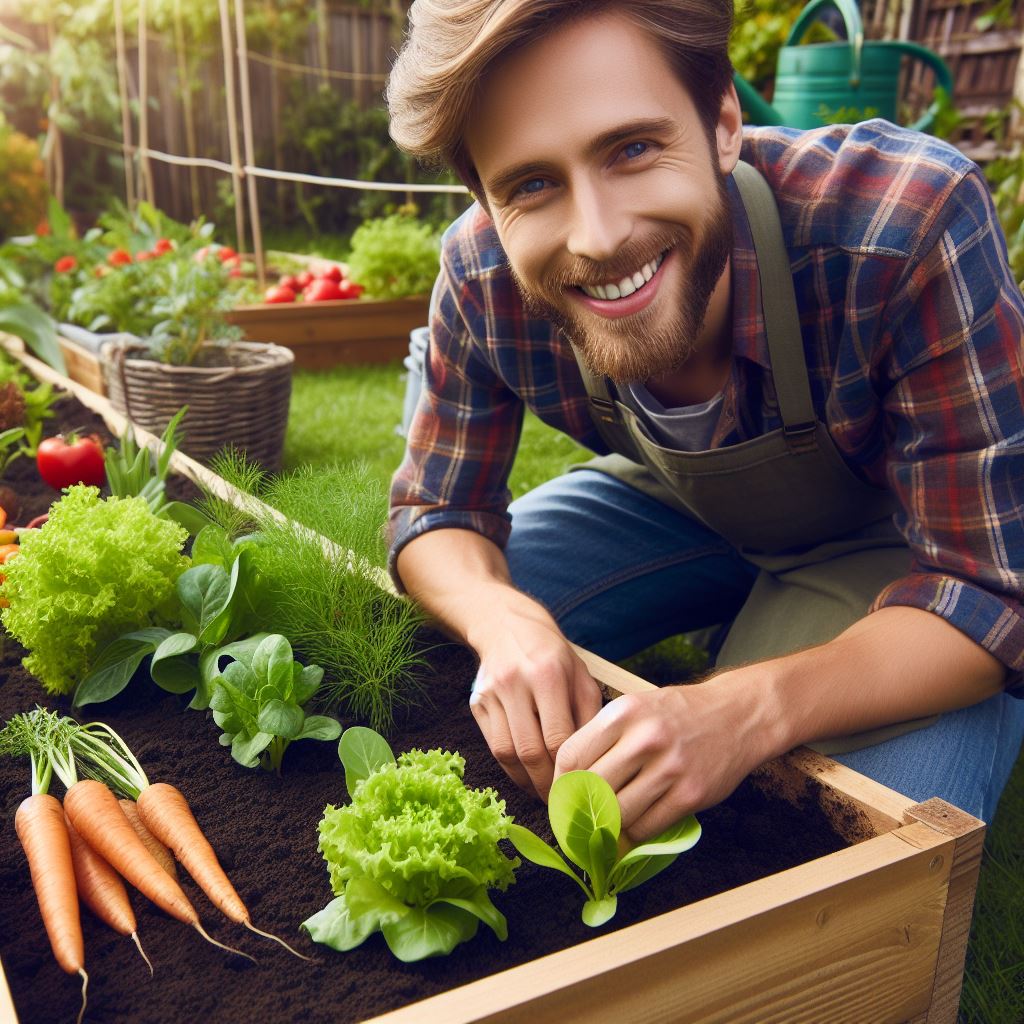Introduction
Briefly introduce the importance of composting for soil enrichment
Composting is a cornerstone of sustainable gardening, essential for nurturing thriving ecosystems.
By breaking down organic matter into nutrient-rich soil, composting not only reduces waste but also enriches soil with essential elements crucial for plant growth.
Engaging in composting offers an array of benefits
- Nutrient-Rich Soil: Compost provides a natural source of essential nutrients like nitrogen, phosphorus, and potassium, vital for plant growth and development.
- Improved Soil Structure: Compost enhances soil structure, promoting better aeration, drainage, and moisture retention. This fosters healthy root development and reduces soil erosion.
- Natural Pest Control: Compost contains beneficial microorganisms that help suppress plant diseases and pests, reducing the need for harmful chemical pesticides.
- Reduction of Chemical Dependency: Utilizing compost minimizes the reliance on synthetic fertilizers, contributing to a more sustainable and eco-friendly gardening approach.
- Waste Reduction: Composting diverts organic waste from landfills, where it would otherwise emit harmful greenhouse gases. This not only reduces environmental impact but also closes the nutrient loop in the ecosystem.
By embracing composting practices, gardeners can cultivate vibrant, resilient landscapes while minimizing their ecological footprint.
Whether you’re a seasoned gardener or just starting, incorporating composting into your routine will undoubtedly yield bountiful rewards for both your garden and the planet.
What is Composting?
Define composting and highlight its natural processes
Composting is a natural process that involves the decomposition of organic materials into nutrient-rich soil.
- Microorganisms such as bacteria and fungi break down the organic matter.
- These microorganisms consume the organic waste, releasing carbon dioxide, heat, and moisture.
- As the decomposition process continues, the organic matter transforms into humus, a dark and nutrient-rich material.
Various organic materials suitable for composting
- Kitchen scraps: Fruit and vegetable peels, coffee grounds, eggshells, and tea bags can all be composted.
- Yard waste: Leaves, grass clippings, small branches, and plant trimmings can also be added to the compost pile.
- Shredded paper and cardboard: These materials provide carbon for the compost and help create a balance with the nitrogen-rich waste.
- Animal manure: Manure from herbivores such as cows, horses, and chickens can be used in composting.
- Wood chips and sawdust: These materials break down slowly and can provide structure to the compost pile.
- Garden waste: Weeds, dead plants, and flowers can all be composted as long as they are pesticide-free.
- Straw and hay: These materials are excellent for composting as they add carbon and improve aeration.
- Seaweed: If you have access to seaweed, it can be an excellent addition to your compost pile.
- Coffee grounds and filters: These waste products are rich in nitrogen and can be used to enrich the compost.
- Nutshells: Crushed nutshells can be added to the compost pile, but avoid using walnut shells as they contain a chemical that can inhibit plant growth.
- Worm castings: Worms are excellent composters, and their castings, also known as vermicompost, can be added to improve the soil fertility.
Therefore, composting is a natural process that involves the decomposition of organic materials into nutrient-rich soil.
It is a simple and effective way to recycle kitchen scraps, yard waste, and other organic materials.
By understanding the basics of composting and utilizing suitable organic materials, you can create a rich and healthy soil for your plants.
Read: Must-Have Tools for Fruit & Veggie Gardens
Getting Started with Composting
Choosing the right location for composting
Find a sunny spot in your yard that is easily accessible for adding materials.
Avoid placing composting bins near trees or shrubs to prevent root invasion.
Make sure the location has good drainage to prevent waterlogging your compost pile.
Selecting a composting method
There are several composting methods to choose from, depending on your needs and available resources.
Traditional backyard composting
Requires a compost bin or pile that is periodically turned and watered.
Materials such as kitchen scraps, leaves, and grass clippings are used.
Transform Your Agribusiness
Unlock your farm's potential with expert advice tailored to your needs. Get actionable steps that drive real results.
Get StartedProduces rich compost within 6 months to 2 years.
Vermicomposting
Uses worms to break down organic waste into nutrient-rich vermicast.
Requires a worm bin and a balanced mix of kitchen scraps, shredded paper, and bedding materials.
Produces compost faster than traditional composting, usually within 3-4 months.
Bokashi composting
Involves fermenting food waste using a special inoculated bran.
Requires an airtight container, such as a bucket, to store the waste while it ferments.
Produces a nutrient-rich liquid fertilizer and can be done indoors.
Aerated static pile composting
Uses a large pile or receptacle with aeration tubes or pipes to provide oxygen to the microbes.
Requires regular turning to aerate the materials and maintain proper decomposition.
Best suited for large-scale composting, such as in agricultural or industrial settings.
Choosing the right composting method depends on factors such as available space, desired speed of compost production, and the materials you have on hand.
Experimenting with different methods can be beneficial to find the one that works best for you.
Remember, no matter which method you choose, the key to successful composting lies in achieving the right balance of carbon-rich (browns) and nitrogen-rich (greens) materials, as well as proper aeration and moisture levels.
Now that you know how to choose a location and select a composting method, you are ready to start composting and enrich your soil naturally!
Read: Choosing Tools for Hydroponic Gardening
Composting Materials: What to Include and Exclude
When it comes to composting, using the right materials is essential to ensure successful decomposition and nutrient-rich soil.
Here, we will discuss the essential materials to include in your compost pile and those you should avoid adding.
Essential materials for composting
To create a balanced compost pile, you need a combination of nitrogen-rich green materials and carbon-rich brown materials.
Nitrogen-rich green materials
These materials are typically high in nitrogen and provide the necessary nutrients for the composting process. They include:
- Grass clippings
- Vegetable scraps
- Coffee grounds
Carbon-rich brown materials
Carbon-rich materials help balance the nitrogen content in the compost pile and provide a source of carbon.
Examples of carbon-rich materials include:
- Dried leaves
- Straw
- Shredded paper
Water
Moisture is crucial for the composting process. Make sure to keep your compost pile damp, but not waterlogged.
Regularly check the moisture levels and adjust accordingly.
Oxygen
Oxygen is necessary for the decomposition process.
Showcase Your Farming Business
Publish your professional farming services profile on our blog for a one-time fee of $200 and reach a dedicated audience of farmers and agribusiness owners.
Publish Your ProfileTurning your compost pile regularly helps introduce oxygen and aids in the decomposition of organic matter.
Materials to avoid composting
While many organic materials can be composted, certain items should be kept out of your compost pile due to various reasons:
Diseased plant material
Avoid adding plants that are diseased or infested with pests to your compost pile.
This prevents the spread of diseases and pests to healthy plants.
Meat and dairy products
Meat, fish, and dairy products can attract unwanted pests and rodents to your compost pile.
These items also take longer to decompose and may cause unpleasant odors.
Oily or greasy substances
Avoid adding oils, fats, or greasy food scraps to your compost pile as they can create an unpleasant smell and attract pests.
Stick to plant-based materials for a healthy compost pile.
Remember, successful composting requires the right balance of materials and conditions.
By using the appropriate materials and avoiding those that can disrupt the process, you can create nutrient-rich compost for your garden.
Read: Container Gardening Tools for Urbanites

Proper Composting Techniques for Success
Achieving the right balance of green and brown materials
- Green materials include kitchen scraps, grass clippings, and fresh leaves.
- Brown materials include dried leaves, straw, cardboard, and wood chips.
- Aim for a balanced ratio of 50% green to 50% brown materials.
- This balance ensures proper decomposition and prevents foul odors in the compost pile.
Layering and mixing compost materials effectively
- Start with a layer of brown materials about 6-8 inches thick.
- Add a layer of green materials of similar thickness on top.
- Continue layering brown and green materials until the pile is at least 3 feet high.
- Mix the layers occasionally to ensure proper decomposition and distribution of nutrients.
Maintaining proper moisture and aeration levels
- The ideal moisture level for compost is similar to a wrung-out sponge.
- Regularly check the moisture content and water the pile if it becomes too dry.
- Avoid overwatering, as excessive moisture can lead to a lack of oxygen and anaerobic decomposition.
- To improve aeration, turn and mix the compost pile every few weeks to incorporate oxygen.
Turning or rotating the compost pile
- Turning the compost pile helps accelerate decomposition and prevents odor and pest problems.
- Use a garden fork or a compost turning tool to carefully mix and turn the pile.
- Turning the pile every 1-2 weeks ensures even decomposition and improves airflow.
- If space is limited, consider using a compost tumbler that can be rotated easily.
Managing compost temperature
- Compost piles generate heat as organic materials break down.
- Keep the pile moist and turn it regularly to maintain the temperature between 135-160°F.
- The high temperatures help kill pathogens, weed seeds, and insect eggs.
- If the pile becomes too hot, turn it more frequently or add additional dry materials to cool it down.
By following these proper composting techniques, you can create nutrient-rich compost for healthier soil in your garden.
Read: Hydroponics: Soil-Free Veggie Growing
Troubleshooting Common Composting Issues
Addressing foul odors
- Ensure a balanced mix of green and brown materials to prevent smelly compost.
- Avoid adding meat, dairy, or oily materials that can cause unpleasant odors.
- Turn the compost regularly to improve airflow and reduce anaerobic conditions.
- Cover the compost pile with a layer of soil or dry leaves to contain odors.
Dealing with pests and insects
- Keep the compost pile well-maintained, avoiding overfilling or neglecting it.
- Use a compost bin or container with a secure lid to prevent pests from accessing the compost.
- Avoid adding food scraps that attract pests, such as fruit peels or sugary items.
- Add some wood ash or diatomaceous earth to deter insects like ants or flies.
Solving slow decomposition
- Ensure proper balance between nitrogen-rich (green) and carbon-rich (brown) materials.
- Chop or shred large materials to speed up decomposition by increasing surface area.
- Ensure appropriate moisture levels by adding water if the compost is too dry or covering it if too wet.
- Turn the compost more frequently to increase oxygen availability and accelerate decomposition.
Preventing excessive moisture or dryness
- Monitor the moisture level by squeezing a handful of compost; it should be moist but not dripping.
- Add water if the compost feels too dry, ensuring it is evenly distributed.
- Cover the compost pile during heavy rain or use a tarp to prevent excessive moisture.
- Turn the compost regularly to mix and distribute moisture evenly throughout the pile.
Successfully troubleshooting common composting issues will ensure a healthy and productive composting process.
By following these solutions, you can address foul odors, pests, slow decomposition, and moisture problems effectively.
Remember, creating compost is a natural process, and occasional challenges may arise.
Paying attention to the compost pile’s ingredients, moisture levels, and maintenance routine will help you overcome these issues and consistently produce nutrient-rich compost for your garden.
Happy composting!
Remember, a healthy composting process relies on properly troubleshooting any issues that arise.
By addressing foul odors, pests, slow decomposition, and moisture problems, you can ensure a productive and beneficial composting experience.
Happy composting!
Harvesting and Using Compost
Indications that compost is ready for use
Using compost in your garden or potted plants can greatly benefit their overall health and vitality.
When your compost exhibits the following indications, it is ready to be incorporated into your gardening routine:
- Dark and crumbly texture: A well-composted material should have a dark color, resembling rich soil, and a crumbly texture that indicates good decomposition.
- Earthy smell: The compost should emit an earthy, pleasant smell, without any foul odors. This indicates the breakdown of organic matter and the presence of beneficial microorganisms.
- No recognizable materials: The original materials used in the compost pile, such as vegetable scraps or yard waste, should no longer be identifiable. Instead, they should have transformed into a homogeneous mixture.
- Reduced size and temperature: The compost pile should have decreased in size and cooled down significantly. This indicates that the composting process has been completed, and the material is stabilized and safe to use.
Harvesting techniques to obtain finished compost
When it comes to harvesting the finished compost, there are various techniques you can employ:
- Turn the pile: Use a pitchfork or shovel to carefully turn the pile, exposing the ready-to-use compost at the bottom while leaving unfinished materials on top for further decomposition.
- Removable sides or access doors: Consider constructing compost piles with removable sides or using compost bins with access doors, allowing easy access to the finished compost from one side.
- Sifting: To obtain a finer compost, sift the material through a mesh screen or a homemade sifter, removing any large debris or unfinished pieces that can be returned to the pile for further decomposition.
Utilizing compost in the garden or potted plants
Now that you have harvested your compost, it’s time to utilize it in your garden or potted plants:
- Soil amendment: Mix the compost into the soil at a ratio of 1:3 (compost to soil) to enhance its structure, increase moisture retention, improve nutrient availability, and promote healthier root development and plant growth.
- Mulching: Spread a layer of compost around your plants, covering the soil’s surface. This acts as a protective covering, suppressing weed growth, retaining moisture, regulating soil temperature, and nourishing the plants as it gradually breaks down.
- Compost tea: Steep a shovel of compost in a bucket of water for several days, occasionally stirring the mixture. Afterward, strain the liquid and dilute it with water (1:10 ratio) before using it as a natural and nutrient-rich fertilizer for your plants.
By incorporating compost into your gardening practices, you are not only reducing organic waste but also improving the health of your plants and the fertility of your soil.
Start composting today and witness the incredible benefits it brings to your garden!
Conclusion
Composting isn’t just about waste reduction; it’s a fundamental practice for nurturing lush, nutrient-rich soil and thriving gardens.
Here’s a quick recap of why composting is essential and how it benefits you:
- Enhanced Soil Fertility: Compost enriches soil with essential nutrients, promoting healthier plant growth and resilience against pests and diseases.
- Waste Reduction: By composting organic materials, you divert waste from landfills, reducing methane emissions and contributing to a healthier environment.
- Sustainable Gardening: Composting reduces the need for synthetic fertilizers and pesticides, aligning with eco-friendly gardening practices.
- Improved Soil Structure: Compost enhances soil structure, promoting better drainage, aeration, and moisture retention, crucial for robust root development.
Now, it’s time to take action.
Don’t hesitate to start composting in your own backyard or community garden.
By embracing composting, you not only enrich your soil but also play a vital role in fostering environmental sustainability.
Your efforts will yield greener, more vibrant landscapes while contributing to a healthier planet for generations to come.




